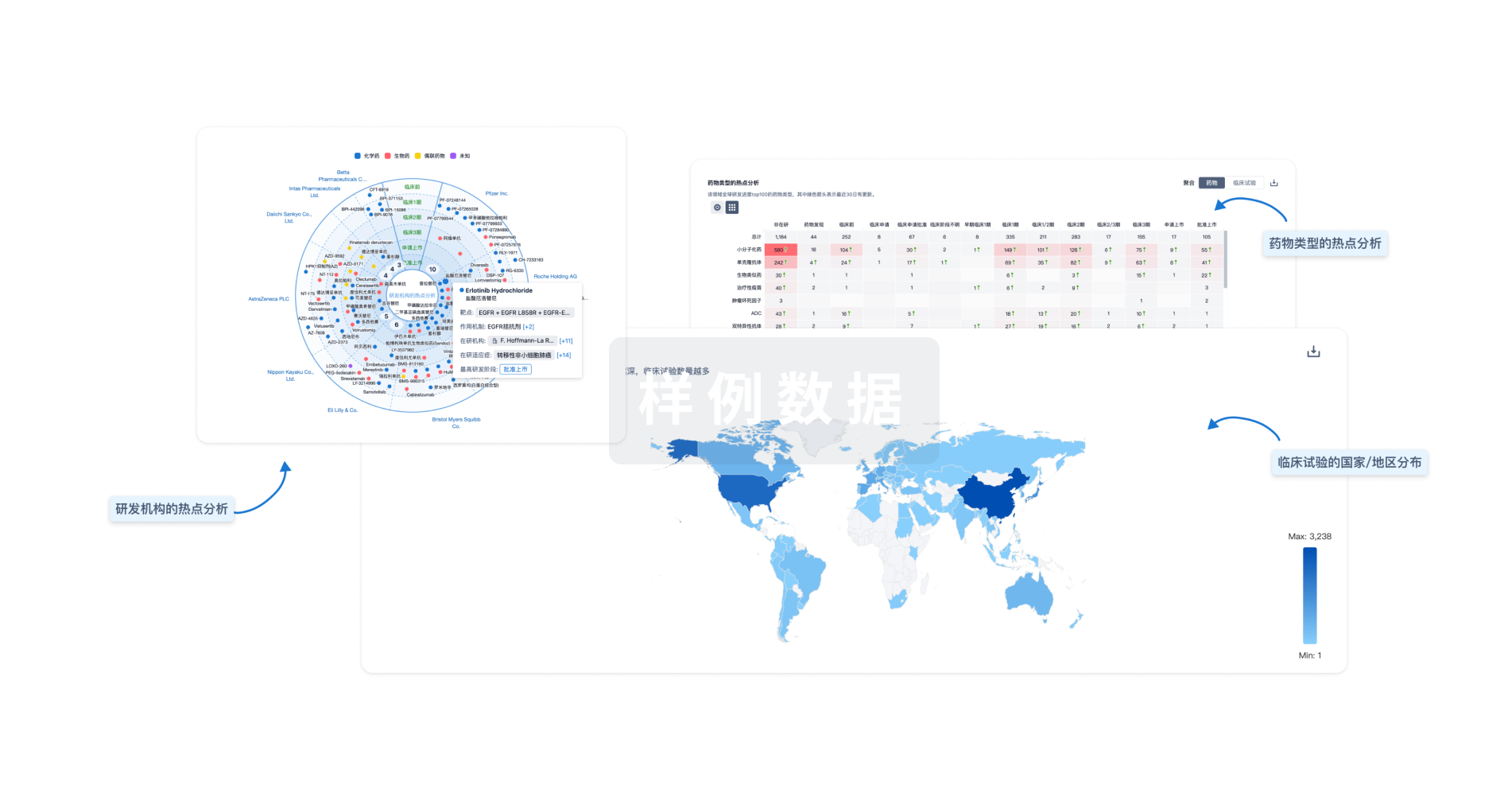预约演示
更新于:2025-05-07
Asphyxia
窒息
更新于:2025-05-07
基本信息
别名 ASPHYXIA、ASPHYXIATION、Asphyxia + [31] |
简介 A pathological condition caused by lack of oxygen, manifested in impending or actual cessation of life. |
关联
4
项与 窒息 相关的药物靶点 |
作用机制 ETB激动剂 [+3] |
在研机构 |
最高研发阶段批准上市 |
首次获批国家/地区 印度 |
首次获批日期2023-05-31 |
靶点 |
作用机制 RBM3 inhibitors |
在研机构 |
非在研适应症- |
最高研发阶段临床前 |
首次获批国家/地区- |
首次获批日期1800-01-20 |
CN109694380
专利挖掘靶点 |
作用机制 PDC inhibitors |
在研机构 |
原研机构 |
非在研适应症- |
最高研发阶段药物发现 |
首次获批国家/地区- |
首次获批日期1800-01-20 |
204
项与 窒息 相关的临床试验NCT06659315
Addressing Perinatal Depression and PMTCT Adherence in Malawi: A Couple-Based Approach
Prevention of mother-to-child transmission (PMTCT) of HIV virtually eliminates transmission of HIV from mothers to their infants. Adherence to PMTCT (i.e., to antiretroviral therapy, infant prophylaxis, and exclusive breastfeeding) during pregnancy and the postpartum period is challenging, with evidence from sub-Saharan Africa (SSA) showing suboptimal adherence and persistent viremia among perinatal women. Perinatal depression (PD) is a major driver of women's poor adherence to PMTCT. Interventions that involve male partners to provide social and food/economic support could be a promising approach for addressing PD and PMTCT, yet few interventions have intervened with couples to improve systems of support, communication, and other dyadic processes. The investigators propose to develop and test a couple-based approach to intervene on the mother's perinatal depressive symptoms and to strengthen the relationship and support system for partners to work together around depression to improve PMTCT adherence. The study will take place in antenatal and HIV care settings in Zomba, Malawi. The specific aims are: (1) to develop a couple-based intervention to target perinatal depression (PD) based on an evidence-based approach using problem-solving therapy (PST), augmented with content on couple communication and problem-solving skills; and (2) to assess the feasibility and acceptability (F&A) of the intervention via a pilot randomized controlled trial (RCT). Our short-term goal is the produce a couple-focused PST intervention that can be added to the global health toolkit for treating depression in perinatal women. Our long-term goal is to produce a high-impact and sustainable intervention leveraging the couple relationship that can be scaled-up to address depression, PMTCT adherence, and family health.
开始日期2026-01-01 |
申办/合作机构 |
NCT06467916
The Development of PATH, a Program to Support NICU Parent Mental Health Through the Transition From Hospital to Home
The objective of this study is to develop and pilot test a telehealth-based mental health screening and engagement program that supports parents as their infants transition home from the NICU. The program will use a stepped-care approach to screen parents for depression, anxiety, and PTSD; provide a brief behavioral intervention to those who screen as having at least a low risk of these conditions; and provide a warm hand-off to community mental health services for those at medium to high risk.
开始日期2025-04-22 |
申办/合作机构 |
NCT06896214
The Effect of Standardised Nursing Care Given to Women With Peri-Natal Loss on Peri-Natal Grief, Posttraumatic Stress, Postpartum Depression
This study was planned to evaluate the effect of standardised nursing care given to women with perinatal loss using the nursing process on perinatal grief, posttraumatic stress and postpartum depression.
H01: There is no difference between pre-test, post-test and follow-up tests in terms of perinatal grief scale mean scores in the intervention group.
H02: There is no difference between pre-test, post-test and follow-up tests in terms of IES-R mean scores in the intervention group.
H03: There is no difference between pre-test, post-test and follow-up tests in terms of EPDS mean scores in the intervention group.
H04: There is no difference between the pre-test post-test and follow-up tests in terms of the mean scores of the Complicated Grief Scale in the intervention group.
* At the first encounter with women, the mean scores of PMI, IESR and EPDS will be evaluated.
* The mean EPDS score will be evaluated on the 10th postpartum day, 1st, 3rd and 6th month.
* The mean I-ESR scale score will be evaluated at postpartum 1st, 3rd and 6th month.
* At postpartum 1st and 3rd month, the mean score of PMS will be evaluated.
* At the postpartum 6th month, the mean score of the PBI scale will be evaluated.
H01: There is no difference between pre-test, post-test and follow-up tests in terms of perinatal grief scale mean scores in the intervention group.
H02: There is no difference between pre-test, post-test and follow-up tests in terms of IES-R mean scores in the intervention group.
H03: There is no difference between pre-test, post-test and follow-up tests in terms of EPDS mean scores in the intervention group.
H04: There is no difference between the pre-test post-test and follow-up tests in terms of the mean scores of the Complicated Grief Scale in the intervention group.
* At the first encounter with women, the mean scores of PMI, IESR and EPDS will be evaluated.
* The mean EPDS score will be evaluated on the 10th postpartum day, 1st, 3rd and 6th month.
* The mean I-ESR scale score will be evaluated at postpartum 1st, 3rd and 6th month.
* At postpartum 1st and 3rd month, the mean score of PMS will be evaluated.
* At the postpartum 6th month, the mean score of the PBI scale will be evaluated.
开始日期2025-04-15 |
申办/合作机构 |
100 项与 窒息 相关的临床结果
登录后查看更多信息
100 项与 窒息 相关的转化医学
登录后查看更多信息
0 项与 窒息 相关的专利(医药)
登录后查看更多信息
15,122
项与 窒息 相关的文献(医药)2025-12-31·Dialogues in Clinical Neuroscience
The complex interaction between oestrogen receptor genes, oestradiol, and perinatal mood
Article
作者: Johann, Alexandra ; Dukic, Jelena ; Ehlert, Ulrike ; Zorzini, Gianna
2025-12-31·The Journal of Maternal-Fetal & Neonatal Medicine
Time of day/unit busyness at birth and perinatal hypoxia and or moderate to severe hypoxic ischemic encephalopathy a cohort study
Article
作者: Tang, Selphee ; Hicks, Matt ; Mohammad, Khorsid ; Wood, Stephen
2025-12-31·The Journal of Maternal-Fetal & Neonatal Medicine
Investigation of the relationship between salivary nitrate levels and perinatal anxiety and postpartum depression
Article
作者: Li, Tianzuo ; Lin, Yafan ; Che, Xiangming
103
项与 窒息 相关的新闻(医药)2025-04-30
·丁香园
刀片嗓,不能只想到新冠患儿,男,9 岁,主因咽痛,咽部异物感 12 小时就诊。患儿 12 小时前出现剧烈咽痛,吞咽时明显,咽部异物感,无发热,无呼吸困难,就诊社区,考虑「新冠」感染,予「蓝芩口服液」口服,并予「开喉剑」喷喉,患儿上述症状无明显缓解,于睡眠中惊醒,与家属交流发音含糊,遂就诊我院耳鼻喉科,考虑不除外「急性会厌炎」,完善间接喉镜检查,可见会厌舌面明显充血、肿胀,耳鼻喉建议住院治疗,因床位紧张于我科治疗。什么是急性会厌炎? [1]也称急性声门上喉炎,是一种危及生命的严重感染,可引起喉阻塞而窒息死亡。可分型为:急性感染性会厌炎(病理分型卡他型,水肿型,溃疡型),急性变态反应性会厌炎(Ⅰ 型变态反应,嗜酸粒细胞浸润)。成人、儿童均可患此病,全年都可发生,但以冬春季节多见。急性会厌炎什么表现? [2]全身症状轻症者全身症状不明显。重症者多有发热、寒战,体温在 38~39 ℃ 之间,少数可高达 40 ℃ 以上。可有头痛、乏力、周身不适、食欲减退等症状。儿童及年老病人全身症状多较明显,病情进展迅速。小儿可迅速发生衰竭,表现为精神萎靡、体力衰弱、四肢发冷、面色苍白、脉快而细、血压下降,甚至晕厥、休克。局部症状咽喉疼痛:除婴儿不能诉喉痛外,多数病人咽喉疼痛剧烈并进行性加重,伴有明显的吞咽疼痛,有时因脖子的扭动也会引起咽部的剧烈疼痛。吞咽困难:因剧烈的吞咽痛及会厌的肿胀,严重影响吞咽功能,甚至唾液也难咽下。重症者常饮水呛咳,张口流涎。轻者自觉咽部异物感。偶见张口困难。发音含糊:因会厌肿胀,病人多有咽喉阻塞感,语声含糊不清。声带常不受累,很少有声音嘶哑。呼吸困难多在发病 24 小时内出现,当会厌高度肿胀,声门变小,黏痰阻塞时,出现吸气性呼吸困难,伴有吸气性喉鸣;重症者呼吸困难出现早,进展迅速,数小时内可以引起窒息。呼吸困难可表现在呼吸时的特殊体位,一般为前倾体位呼吸,小儿可表现为嗅探体位,即身体前倾,头部及鼻伸向前上方,如同闻气味一样(图 1)。此外患者比较躁动,不能安静。图 1 急性会厌炎
图源:参考文献 [3]很多疾病会以咽痛为主要症状,那么,需要与哪些疾病鉴别?疱疹性咽峡炎: 本病为柯萨奇病毒感染引起,有发热、咽痛表现,但查体咽腭弓及上颚可见疱疹,以此鉴别。急性化脓性扁桃体炎:本病为链球菌感染引起,查体扁桃体可见脓性分泌物,血常规白细胞及中性粒细胞比例升高。以此鉴别。传染性单核细胞增多症:本病为 EB 病毒感染引起,有发热、咽痛、淋巴结肿大,查体扁桃体可见白色渗出物或假膜,血常规白细胞升高,淋巴粒细胞为主,血涂片可见异型淋巴细胞,以此鉴别。新冠病毒感染:本病为新型冠状病毒感染引起,有咽痛症状,但无呼吸困难,不伴随流涎及特殊体位,完善新冠病毒核酸检测有助鉴别。白喉 [4]:白喉起病较缓,咽部不适常不显著,伴随低热,特征性的表现是咽及扁桃体被覆白色至深灰色的假膜,紧密黏附在扁桃体及咽部黏膜表面,不易擦拭,强行去掉可引起出血。哪些原因会导致急性会厌炎? [2]感染:B 型流感嗜血杆菌、A 群链球菌、肺炎链球菌、金黄色葡萄球菌、分枝杆菌、链杆菌、阴沟肠杆菌、大肠埃希菌、坏死梭杆菌、肺炎克雷伯菌、脑膜炎奈瑟菌等。病毒也可以导致该病,如水痘-带状疱疹病毒、I 型单纯疱疹病毒等。在免疫力低下的患者中,可引发念珠菌、曲霉菌等真菌感染。机械及化学损伤:外伤、热损伤(高温饮品、吸入蒸汽等)、机械损伤(异物外伤、医源性器械损伤等)、化学损伤(刺激性有害气体、刺激性食物等)、放射线损伤等都可引起会厌黏膜的炎性病变,继而水肿。变态反应:由于饮食、药物或虫咬等,机体可对某种变应原发生反应。全身性的变态反应可以引起会厌区黏膜及杓会厌襞的高度水肿。邻近器官的急性炎症:如急性扁桃体炎、咽炎、口底炎、鼻炎等周围器官的急性炎症可以蔓延而侵及会厌黏膜,引起水肿。也可继发于急性传染病后。如何治疗?[1,5]因本病进展迅速,故要严密观察病情变化。保持气道通畅、吸氧:对于喉阻塞 Ⅲ 度以上的患者建立人工气道(环甲膜切开、气管切开术或气管插管)是保证患者呼吸道通畅的重要方法,应针对不同患者及条件选择不同方法。抗感染、抗炎:抗生素可选用第 2、3 代头孢菌素静脉滴注,以迅速控制感染。为减轻会厌部水肿,缓解呼吸困难,可静脉注入地塞米松 0.5 mg/kg。局部用药:保持气道湿润、稀化痰液和减轻炎性水肿,常用药物有:布地奈德混悬液,1~2 mg,雾化吸入,1~2 次/日。切开排脓:如会厌舌面脓肿形成,可在保持气道畅通条件下,将脓肿切开,使脓液排出。其他:患儿哭闹严重,可予患儿镇静,避免出现喉痉挛,加重呼吸困难。因疼痛、吞咽障碍不愿进食,容易出现电解质紊乱,应注意保持水电解质酸碱平衡,及时静脉补液、全身支持对症治疗;注意口腔卫生,防止继发感染,鼓励患者进流质饮食,补充营养。什么情况需要气管切开? [6]有专家认为:有以下 4 项中 1~2 项即可考虑行气管切开术:吞咽痛,伴流涎;起病急骤,进展迅速,且有 Ⅱ 度以上吸气性呼吸困难者, 伴有发绀和(或)喘鸣;呼吸急促, 伴心动过速;会厌高度红肿呈「马蹄」形或球形。本文首发于丁香园旗下专业平台:丁香园儿科时间作者:医学小白排版:别放筷子啊图源:站酷海洛投稿:zhangxinyu2@dxy.cn
主要依据及参考文献(上下滑动查看):[1] 韩东一,肖水芳.耳鼻咽喉头颈外科学[M].人民卫生出版社出版:2016.[2] 田兆兴,梅雪.急救医学高级模拟培训教程[M].人民卫生出版社:2015.[3] Baiu I, Melendez E. Epiglottitis. JAMA. 2019;321(19):1946.[4] 王宇明,李梦东.实用传染病学(第4版)[M].人民卫生电子音像出版社:2017.[5] 尚云晓,蔡栩栩.小儿呼吸系统疑难重症病例解析[M].人民卫生电子音像出版社:2022.[6] 胡敏,司勇锋,陆源等.急性会厌炎临床诊治探讨[J].中国耳鼻咽喉头颈外科,2011,18(03):153.
疫苗AHA会议
2025-04-27
·抗体圈
2025年4月22日,阿斯利康宣布,其长效C5补体抑制剂伟立瑞®(瑞利珠单抗注射液)正式获得国家药品监督管理局(NMPA)批准,用于与常规治疗药物联合治疗抗乙酰胆碱受体(AChR)抗体阳性的成人全身型重症肌无力(gMG)患者,这一里程碑式的进展为gMG患者群体带来了新的治疗希望。图1. 瑞利珠单抗注射液在华获批,来源:阿斯利康中国公众号01关于瑞利珠单抗瑞利珠单抗是一种长效C5补体抑制剂,通过靶向抑制补体系统中末端补体C5的激活来发挥作用。补体系统是先天免疫系统的一部分,当其异常激活时,会导致机体攻击自身健康细胞,引发多种免疫疾病。瑞利珠单抗通过高亲和力与C5结合,抑制C5分解为C5a和C5b,从而阻断补体终末通路,减少对神经肌肉接点的攻击和损伤。作为一款长效C5单克隆抗体,瑞利珠单抗在设计上具有独特优势,其半衰期比第一代C5补体抑制剂(如依库珠单抗)更长。成人患者接受初始诱导剂量后,后续仅需每8周静脉注射一次,极大地减轻了患者的治疗负担,提高了治疗的便利性和依从性。瑞利珠单抗此次在中国获批,是基于CHAMPION-MG III期研究的积极成果。该研究结果显示,瑞利珠单抗在关键疗效终点——第26周重症肌无力日常生活活动(MG-ADL)评分较基线改善方面,显著优于安慰剂。02关于全身型重症肌无力全身型重症肌无力(gMG)是一种罕见的、致残性的慢性自身免疫性神经肌肉疾病。该病症以肌肉功能丧失和严重衰弱为特征,在中国约有113,000名确诊患者。大约80%的gMG患者为乙酰胆碱受体(AChR)抗体阳性,这些患者体内的抗体会结合到神经肌肉接点的信号受体,激活补体系统,进而引发免疫系统对神经肌肉接点的攻击,导致炎症反应并破坏大脑与肌肉之间的正常通信。gMG可在任何年龄段发病,但女性多在40岁前发病,男性则多在60岁后发病。患者初期可能出现言语模糊、复视、眼睑下垂和平衡缺失等症状,随着疾病进展,这些症状可能加剧为吞咽障碍、窒息、极度疲劳甚至呼吸衰竭,严重影响患者的日常生活和工作能力。03临床试验数据详情CHAMPION-MG III期研究是一项为期26周的随机、双盲、安慰剂对照的多中心临床试验,旨在评估瑞利珠单抗在治疗成人gMG患者中的安全性和有效性。研究共纳入175例患者,覆盖北美、欧洲、亚太地区和日本。所有受试者在筛选访视前至少六个月被确诊为重症肌无力,血清学检测为抗AChR抗体阳性,MG-ADL评分至少为6分,且符合美国重症肌无力基金会临床分型II至IV型。在随机对照期间,患者可继续接受稳定剂量的标准药物治疗。研究中,患者按1:1的比例随机分配至瑞利珠单抗组或安慰剂组,接受26周的治疗。患者在第1天接受基于体重的单次诱导剂量,随后从第15天开始每8周接受一次基于体重的维持剂量给药。研究的主要终点为第26周MG-ADL评分较基线的变化,次要终点则包括多个疾病相关指标和生活质量指标的改善。结果显示,瑞利珠单抗组在MG-ADL评分改善方面显著优于安慰剂组,表明其能有效提升患者的日常活动能力。此外,开放标签扩展研究证实,瑞利珠单抗的疗效可持续至60周。美国神经病学学会(AAN)公布并发表于《欧洲神经学杂志》的CHAMPION-MG III期试验最终研究结果进一步证实,瑞利珠单抗对重症肌无力(MG)症状的改善可维持长达164周,为患者的长期治疗提供了有力支持。更值得关注的是,与安慰剂相比,瑞利珠单抗治疗使每百名患者每年的疾病加重发生率大幅降低了71.1%。在CHAMPION-MG研究中,瑞利珠单抗展现出与安慰剂相当的安全性。长期观察结果与III期研究数据保持一致,接受瑞利珠单抗治疗的患者中常见的不良反应包括恶心、头痛和腹泻,这些反应大多为轻至中度,且在治疗过程中可有效管理。04价值前景展望瑞利珠单抗的获批为gMG患者带来了全新的治疗选择。传统的gMG治疗方法虽能在一定程度上缓解症状,但存在诸多局限性。而瑞利珠单抗凭借其独特的C5补体抑制机制长效发挥作用,能更有效地控制病情,减少疾病加重的风险,为患者提供更稳定、更长期的治疗效果。每8周一次的给药方式不仅提高了治疗的便捷性,还有助于改善患者的治疗依从性,从而进一步提升治疗效果,改善患者的生活质量。瑞利珠单抗的成功研发和获批上市,体现了生物医药技术在罕见病治疗领域的创新突破。作为一款长效C5补体抑制剂,它为补体介导疾病的治疗提供了新的思路和方法。其研发过程中所采用的先进技术和独特设计,如延长半衰期的优化,为未来开发更多长效、高效的生物制品提供了宝贵经验,推动了整个行业在罕见病治疗药物研发方面的发展。对于阿斯利康而言,瑞利珠单抗在华获批标志着其在罕见病治疗领域的进一步拓展。此前,瑞利珠单抗已在多个国家和地区获批用于治疗多种自身免疫性疾病,如阵发性睡眠性血红蛋白尿(PNH)、非典型溶血性尿毒症综合征(aHUS)、视神经脊髓炎谱系疾病(NMOSD)等。此次在中国获批用于gMG治疗,丰富了其产品管线,扩大了市场覆盖范围。随着中国对罕见病治疗重视程度的不断提高和医疗需求的持续增长,瑞利珠单抗有望在中国市场取得良好的业绩表现,为公司带来新的增长机遇。结 语瑞利珠单抗在华获批用于治疗成人gMG患者,是阿斯利康在中国罕见病领域发展的重要里程碑。展望未来,阿斯利康有望继续加大在罕见病治疗领域的研发投入,推动更多创新药物的上市。同时,随着瑞利珠单抗在临床应用中的不断推广,其在gMG治疗中的价值将得到更充分的验证和肯定,有望进一步提升其在市场中的份额和影响力。瑞利珠单抗的获批为成人全身型重症肌无力患者带来了新的曙光。其独特的长效设计、显著的临床疗效以及便捷的给药方式,使其成为gMG治疗领域的有力武器。这一成果不仅是阿斯利康在罕见病治疗领域的重大突破,也为广大患者带来了实实在在的临床获益,开启了gMG治疗的新篇章。参考资料:1. 阿斯利康中国公众号识别微信二维码,添加抗体圈小编,符合条件者即可加入抗体圈微信群!请注明:姓名+研究方向!本公众号所有转载文章系出于传递更多信息之目的,且明确注明来源和作者,不希望被转载的媒体或个人可与我们联系(cbplib@163.com),我们将立即进行删除处理。所有文章仅代表作者观点,不代表本站立场。
临床3期上市批准临床2期临床失败申请上市
2025-04-25
·梅斯医学
12岁的明明(化名)从7个月大起就开始“对声音过敏”——一听到陌生声音或被轻轻碰一下,立马身体僵硬、翻白眼,甚至呼吸暂停,家人以为是“吓到了”。随着年龄增长,症状越来越频繁,尤其是在陌生、嘈杂或空旷环境下,明明会突然全身僵硬,像被“冻结”一般,无法行动,甚至因此反复跌倒受伤。这些突如其来的发作,让她不敢出门、不愿上学,逐渐变得焦虑胆怯。家长带她辗转多家医院,排除了癫痫、神经肌肉病和心脏病,却始终查不出真正原因。明明到底怎么了?接诊医生为明明进行了详细的病史采集及相关检查,发现头颅磁共振成像、多种实验室检测均无异常,多次行视频脑电图发作期未见癫痫样放电,发作间期无异常。基因检查发现了明明的11号染色体上的 SLC6A5基因存在c.643T>C(p.W215R)杂合变异,终于发现了关键,确诊为:过度惊吓反应症(Startle disease spectrum disorders)。具有遗传异质性过度惊吓反应症是一种具有遗传异质性的常染色体显性或隐性遗传病,主要由抑制性甘氨酸神经传递缺陷所致,甘氨酸受体相关基因的变异可引起氯离子通道开关异常,进而导致突触抑制失效,表现出过度惊吓反应。基于其潜在的遗传学病因,OMIM数据库已将遗传性过度惊吓症分为4型,最常见的致病基因为 GLRA1,于1993年被Shiang等首先提出。另外还有一些比较少见的致病基因,如 GPHN、 ARHGEF9等。临床表现过度惊吓反应症主要的临床特征为:新生儿期及婴儿期起病,少数可在宫内起病 。多由不可预料的外界刺激(听觉、视觉或触觉等)后产生过度的惊吓反应,这种反应不能自主适应。宫内期表现为频繁的发作样异常胎动;新生儿期表现为夸张的惊恐样表情,四肢抖动,烦躁不安,肌张力增高,肌肉僵直,身体呈弓状,多伴嘴唇青紫,呼吸暂停,甚至窒息死亡;婴儿期与新生儿期大同小异,但可发现患儿上述表现时意识清晰。多数患儿症状在婴儿期逐渐缓解甚至消失,个别患儿可持续至成年甚至终身存在,但随着年龄的增长,临床表现逐渐减轻。诊断点鼻试验阳性(叩击患儿鼻尖或上唇导致面部肌肉收缩同时伴有头后仰或身体僵硬的反应,且多次试验无适应性)是诊断该疾病的特异性方法。基因检测是目前唯一的确诊手段,由于对该病的认识不足,极易被误诊为癫痫。视频脑电图是将过度惊吓反应症与惊吓性癫痫等癫痫类疾病进行鉴别最简单直观的方法。过度惊吓反应症患者(不包括其中合并有癫痫者)的视频脑电图强直发作期可表现为广泛性强直性肌电伪差遮盖脑波,不伴痫样放电或发作期背景改变;发作间期多正常或存在非特异性表现。治疗氯硝西泮是治疗该疾病的首选药物,另外还有使用抗发作药物治疗该疾病的报道,如左乙拉西坦、苯巴比妥、氨己烯酸、卡马西平等,但效果尚未明确。本病虽然一般预后较好,但处理不及时患儿可出现呼吸困难及窒息甚至猝死。参考资料:1.孙敏,张新,徐那,等. 过度惊吓反应症1例临床及遗传学分析. 中华神经科杂志,2023,56(07):780-786.2.韩瑞,张晓莉,贾天明,等. 过度惊吓反应症3例患儿的临床及遗传学分析. 中华医学遗传学杂志,2024,41(06):720-724.3.李慧,杨志仙,薛姣,等. 过度惊吓反应症一例的临床及分子遗传学分析并文献复习. 中华儿科杂志,2017,55(02):120-124.来源 | 梅斯医学编辑 | wanny神经系统罕见病交流群↓点击下方“阅读原文”,下载梅斯医学APP吧!
核酸药物
分析
对领域进行一次全面的分析。
登录
或

Eureka LS:
全新生物医药AI Agent 覆盖科研全链路,让突破性发现快人一步
立即开始免费试用!
智慧芽新药情报库是智慧芽专为生命科学人士构建的基于AI的创新药情报平台,助您全方位提升您的研发与决策效率。
立即开始数据试用!
智慧芽新药库数据也通过智慧芽数据服务平台,以API或者数据包形式对外开放,助您更加充分利用智慧芽新药情报信息。
生物序列数据库
生物药研发创新
免费使用
化学结构数据库
小分子化药研发创新
免费使用







